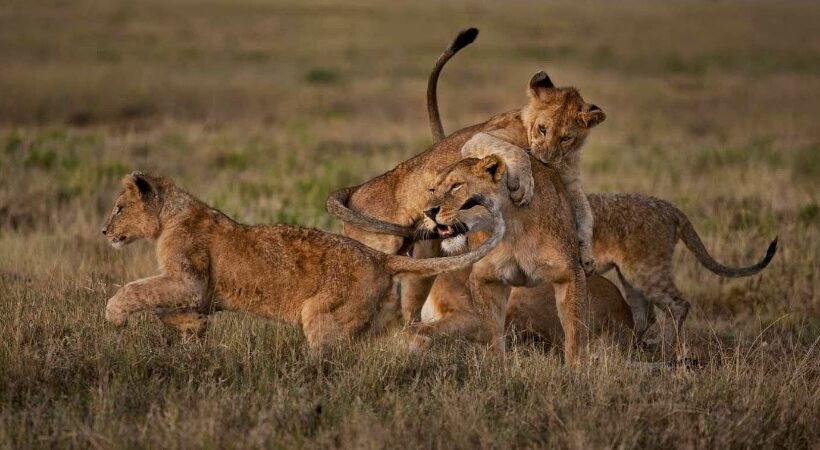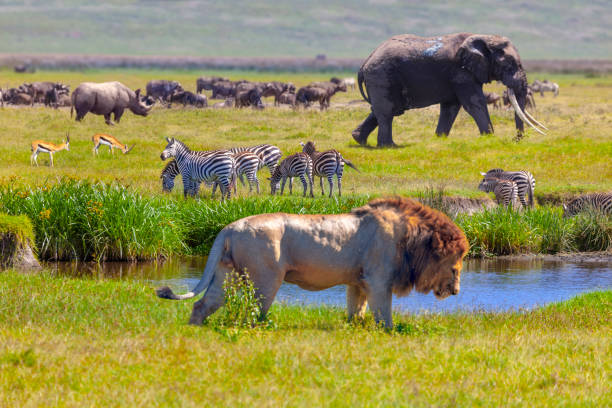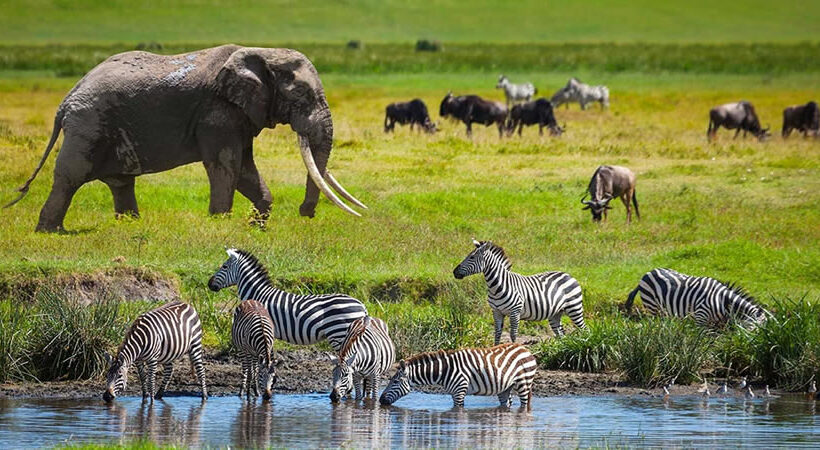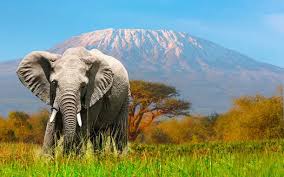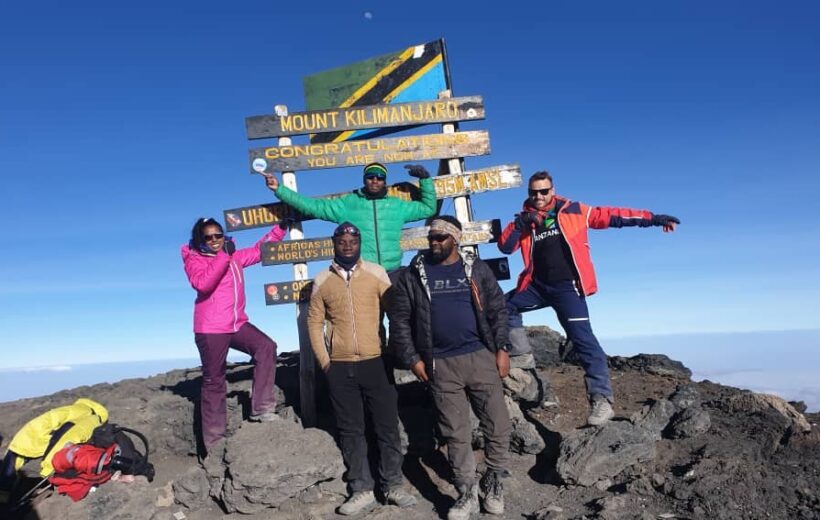- +1 (255)-677-040-011
- info@mercyyetusafaris.com
- Arusha, Tanzania
Ngorongoro Conservation Area
A Natural Wonderland of Diversity and Preservation
Ngorongoro Conservation Area, located in Tanzania, is a UNESCO World Heritage Site and one of Africa's most remarkable landscapes. This geological marvel is home to the Ngorongoro Crater, a vast caldera that shelters an incredible array of wildlife, including the iconic "Big Five" (lion, elephant, buffalo, leopard, and rhinoceros). Beyond the crater, the conservation area encompasses diverse ecosystems, from lush highland forests to expansive grasslands.
Ngorongoro is a living testament to the delicate balance between human and wildlife coexistence. Maasai pastoralists, who have called this region home for centuries, continue their traditional way of life alongside the rich biodiversity. The conservation efforts here aim to protect this unique environment, fostering sustainable practices that benefit both the wildlife and the local communities.
Visitors to Ngorongoro Conservation Area are treated to awe-inspiring panoramas, thrilling wildlife encounters, and a deep connection to the natural world. Whether exploring the crater floor with its teeming wildlife or trekking through the surrounding landscapes, Ngorongoro promises an unforgettable journey into the heart of Africa's natural wonders.
About the
Ngorongoro Conservation Area
Standing on the Ngorongoro Crater rim, looking across to the other side or down to the plains, ranks as one of the mosr incredible sights in the world. It will take your breath away. This is not sight seeing, it is sight feeling! Nearly everybody has heard of one of the best places to see wildlife in Africa, the Ngorongoro Crater. It is such an incredible feature, with the wildlife inside and the stunning location. You will not forget the first time you reach the rim of the crater and look into this huge expanse, trying to spot any animals from up there.
The Ngorongoro Conservation Area is an incredibly diverse region and the crater a stunning destination or backdrop, its main attractions are:
- Spotting the Big Five, including the black rhino inside the Ngorongoro Crater
- Watching the birth of thousands of wildebeest on the Ndutu plains
- Getting a history lesson at Olduvai Gorge
- Enjoying a Maasai cultural experience
- Exploring the lesser known other craters, Olmoti and Empakai
- Hiking with a guide in the Ngorongoro Conservation Area
Often referred to as the ‘Garden of Eden’, the most famous spot in the NCA is the Ngorongoro Crater. It is blessed with rich grazing grounds, and is full to the brim with over 30,000 animals, from antelopes to predators to birds.
The natural confines of the topography ensure the caldera is crawling with species and every drive is jam packed with animals. It’s one of the best places to try to see black rhino and the rest of the Big 5, the lion, the elephant, the buffalo and the leopard. Although leopards are usually found around the rim and are therefore hard to spot.
Thousands of wildebeest give birth on the Ndutu Plains each year at the start of the long rains. Due to the sheer number of births, most survive and soon start the clockwise motion of the annual wildebeest migration. It is an incredible experience with lots of predators in the area and a highlight for many people.
Olduvai Gorge is the prehistoric hotbed of early man. Often cited as the ‘cradle of mankind’ this stretch of ravine in the Rift Valley was one of the hangouts for our oldest ancestors, the world’s first humans! In fact, various different hominid species from over three million years of continuous inhabitation have been discovered in this archaeological goldmine.
Find out how man’s use of tools led to a bigger brain, creating a significant advantage in a world of survival of the fittest. There is a fascinating museum dedicated to all the finds of ancient man plus extinct animals and also the famous footprints of our earliest relatives walking upright.
The NCA is a good place for a cultural visit. Whilst they might feel touristy, it does provide a great insight in the way of life as it has been for many centuries and continues to this day. The Maasai are an iconic symbol of Tanzanian tribal living, with mud huts, initiation ceremonies, drinking of milk and blood, spears, fancy jewellery and an impressive dance routine. Join them for a dance and see if you can jump as high as the Maasai warriors.
They may not be as famous as its bigger cousin Ngorongoro to the south, but Olmoti and Empakai are well worth a visit. Empakai is filled with a lake in its crater and attracts lots of waterbirds, including flamingos. The view from the rim, 300m above the crater lake, is spectacular, but you can also walk down into the crater for a close-up experience. Olmoti has grasslands in its shallow crater and from the east of the crater it is possible to walk to the rim in around an hour. From the rim you can walk to the Munge waterfall.
As the Ngorongoro Conservation Area (NCA) is not a national park, it is possible to go hiking in this vast and beautiful area. Day hikes are possible, as well as long overnight hikes. You can even hike the length of the NCA, starting in the south at Lake Eyasi and continue to Lake Natron and Oldonyo Lengai north of the NCA. The only place in this vast area where you can’t hike is inside the Ngorongoro Crater.
Fly to the Ngorongoro Crater area
Most people fly to Arusha or Kilimanjaro International Airport if they want to visit the Ngorongoro Crater or the other destinations in the NCA (Ngorongoro Conservation Area).
The closest (smaller) airstrip to the Ngorongoro Crater with scheduled flights is Manyara (LKY). Another small airstrip lies on top of the crater rim, but has no scheduled flights.
There is one small airstrip at Ndutu in the west of the NCA, convenient if you want to experience the births of thousands of wildebeest calves.
Book your cheap flight to the Ngorongoro Crater area with Tripindigo today.
Drive to the Ngorongoro Crater area
From Arusha it takes approximately 2 hours to reach the entrance gate of the NCA (Ngorongoro Conservation Area), called Lodoare Entrance Gate.
The cool, dry months of spring from June to October and the hot and dry summer months of December to February are the best times to visit.
High season
You can visit the Ngorongoro Conservation Area at any time of the year, with the dry months from June to October being the most popular. But January and February are also dry and good alternatives. The November and December short rains mean you might have a shower once in a while, but this area is ertainly worth visiting during this time.
Low season
The long rains are generally from March to May and this is usually the low season in this area. However, see the section below for the birthing of the wildebeest.
Best time to visit Ndutu for the calving season
From late February to the end of March, the calving season of the wildebeest on the Ndutu plains takes place. This is the start of the migration and is hard to predict as it hugely depends on the rain in the area.

